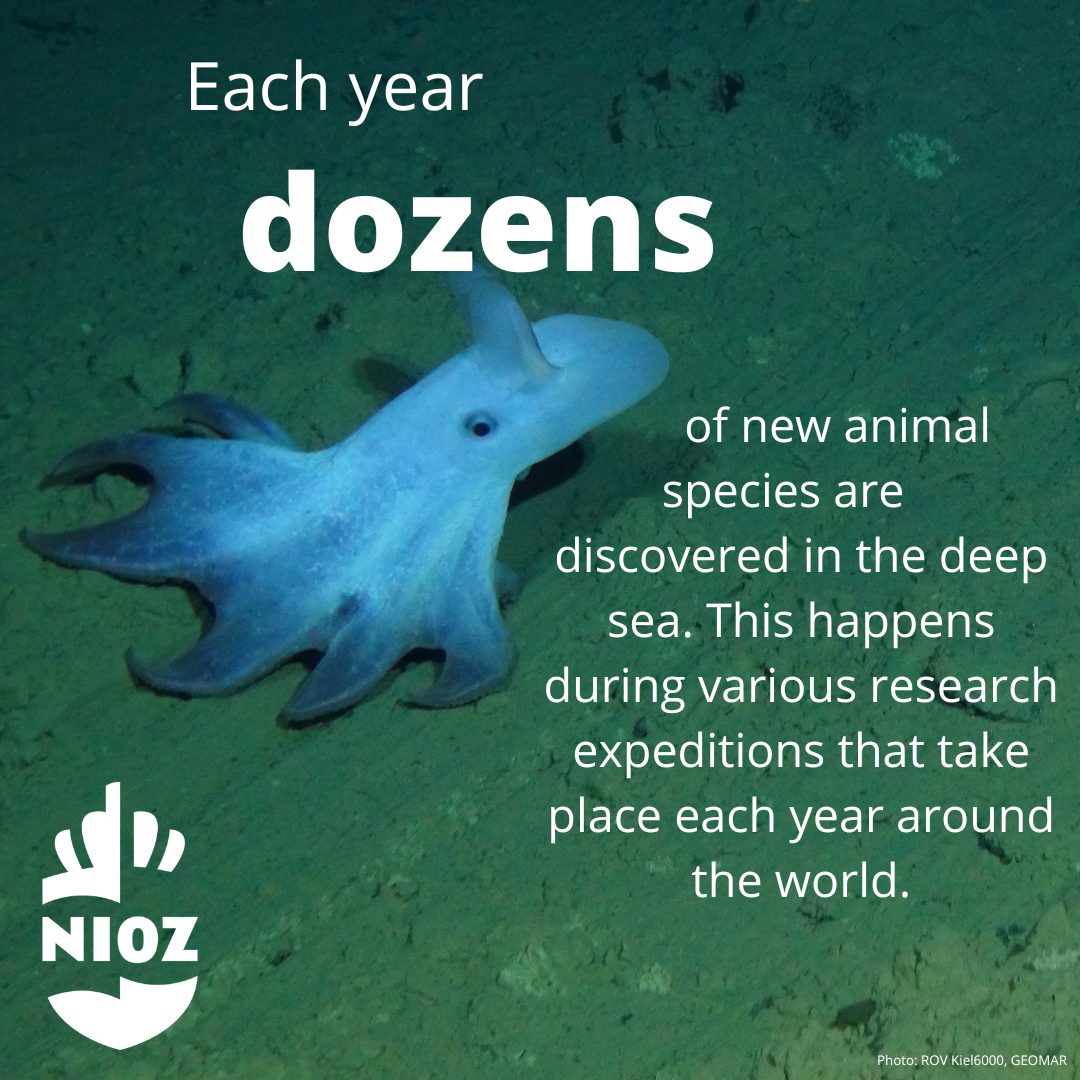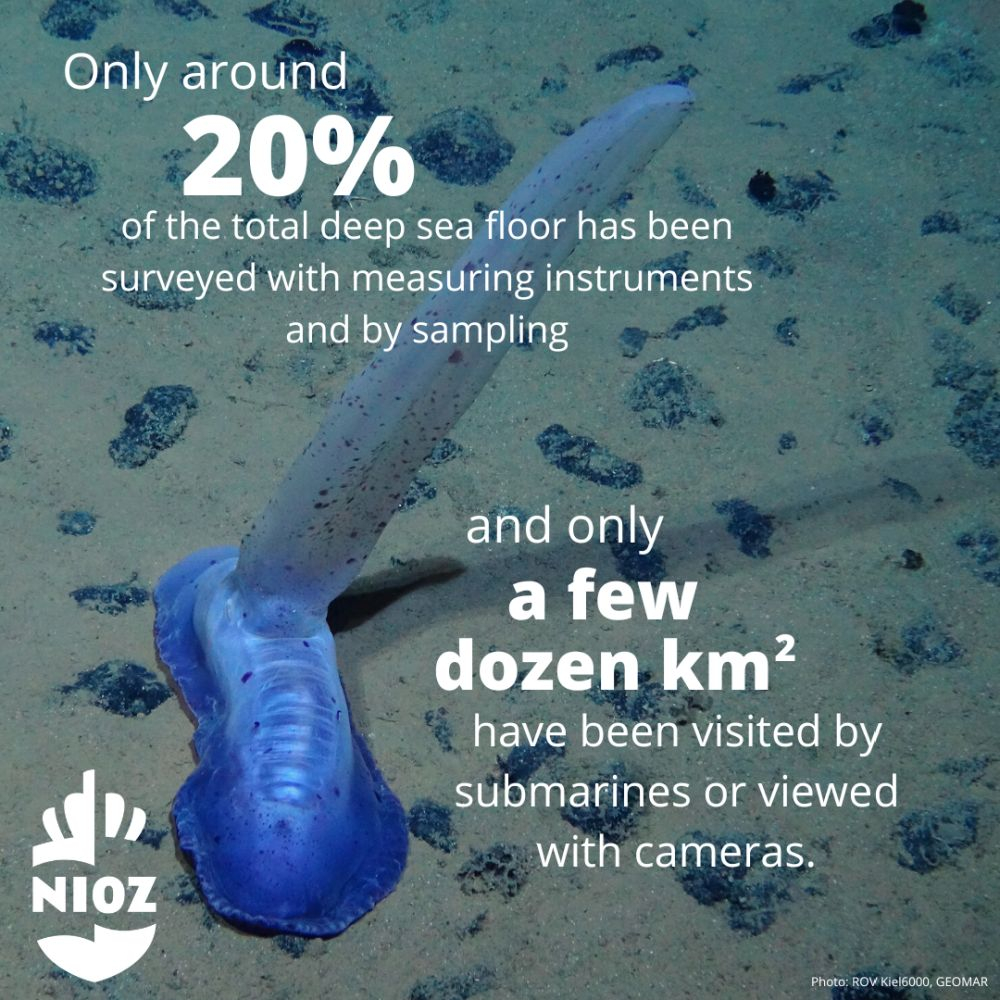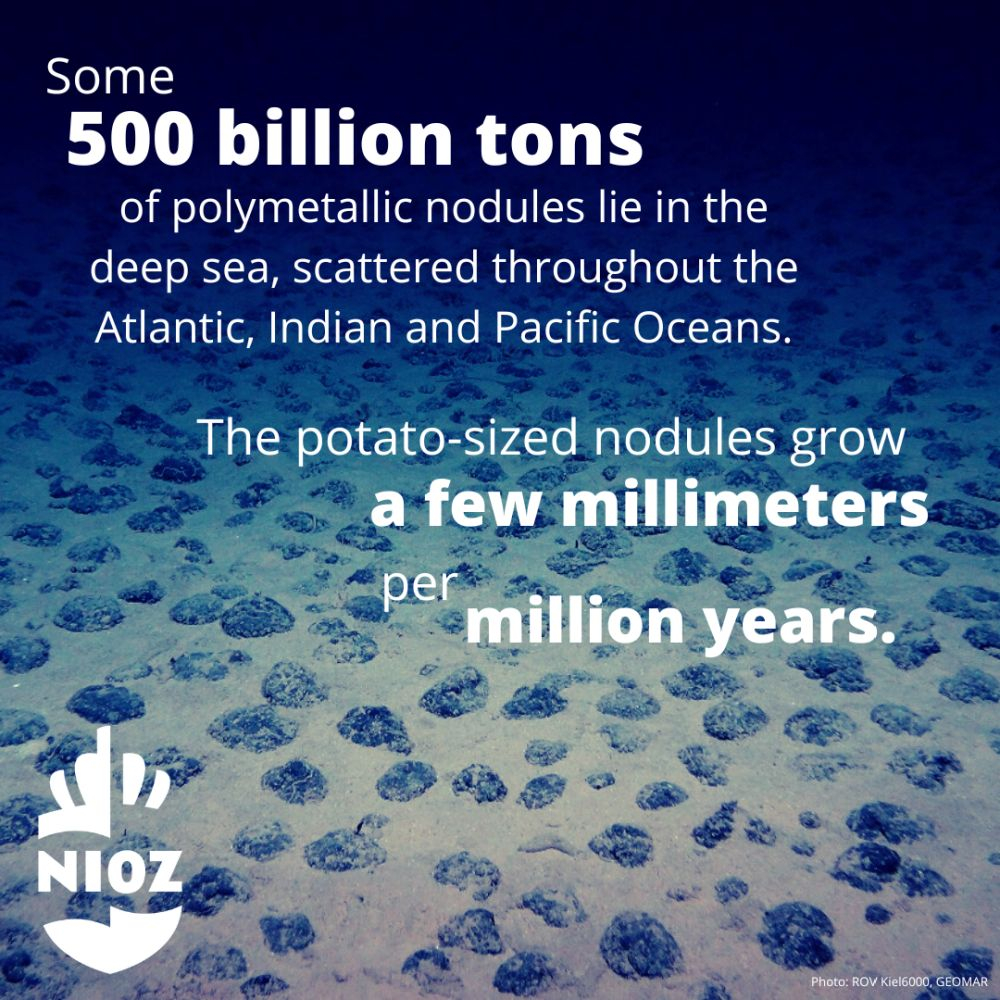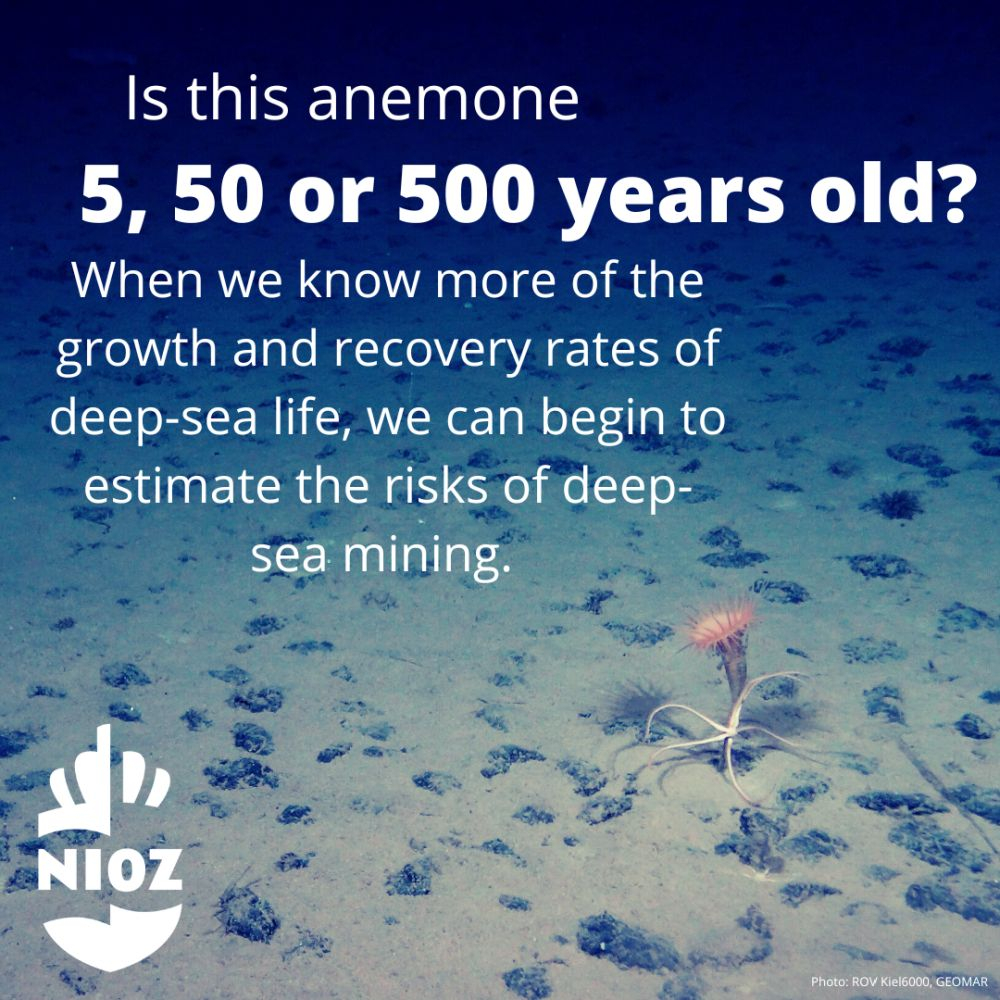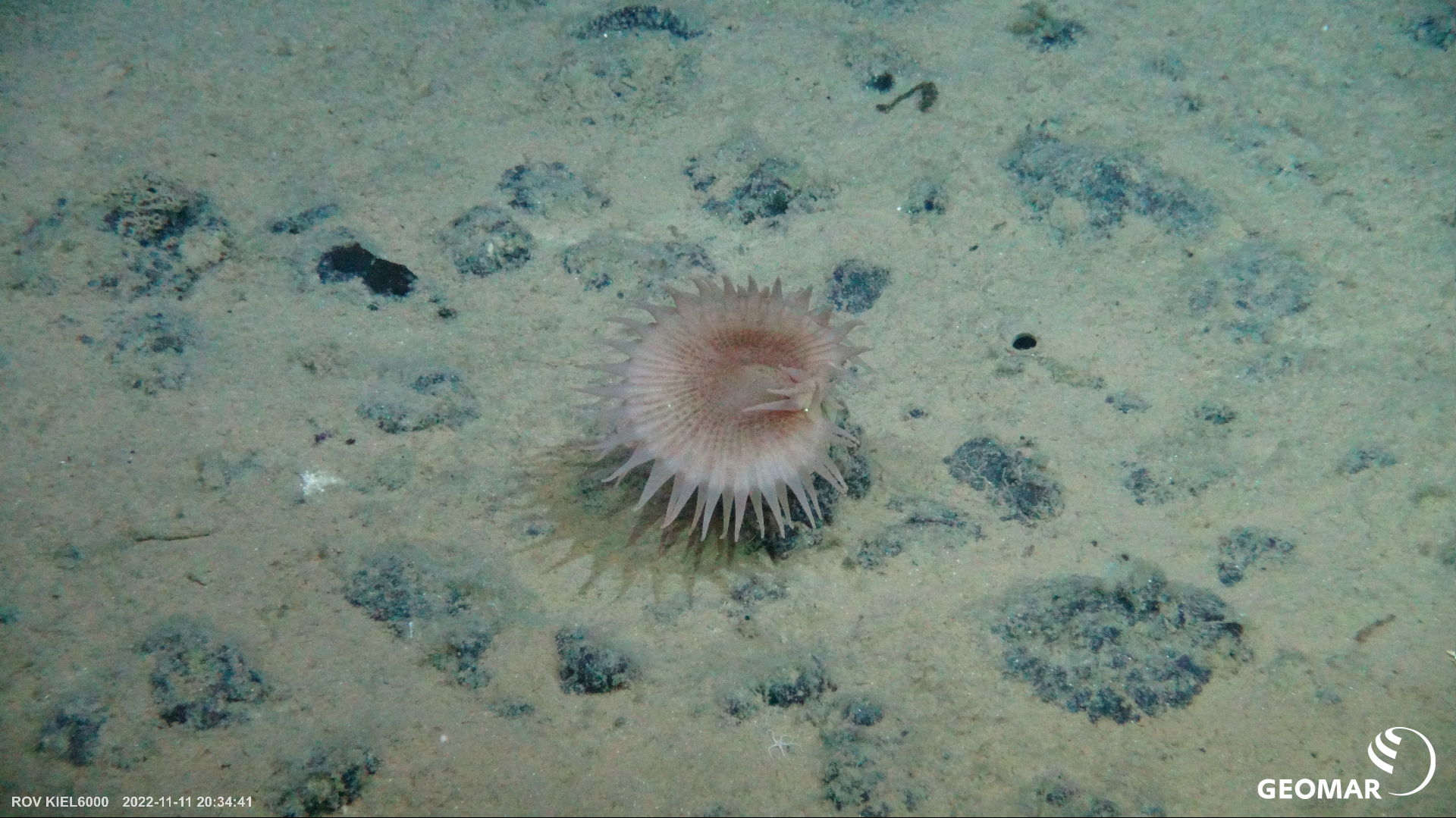
9 December 2022, Restoring the deep sea after mining – would it work?
Sabine Gollner, Pacific Ocean
Many of earth’s ecosystems have undergone significant degradation in the past decades and protecting nature is the most effective tool to prevent further loss of biodiversity. On land and in shallow seas there is a growing recognition that we won’t be able to conserve biodiversity if we do not restore degraded areas. Restoration – the support to the recovery process of ecosystems degraded by humans – finds it form for example as artificial coral reefs that shall help corals, fishes, and other organisms to repopulate such areas.
The deep sea is to date much less degraded by humans compared to terrestrial or shallow marine ecosystems. However, this may change, as rich mineral deposits could be mined from 4.000 meters depth from the ocean floor in the near future. A first test of a pre-prototype machine for deep-sea mining of polymetallic nodules – potato sized rocks that are rich in metals - was carried out in 2021 by the Belgian company DEME-GSR in the middle of the Pacific Ocean. Now the environmental impacts are evaluated by a group of independent scientists during our expedition on research vessel SONNE within the framework of the European project MiningImpact. As part of this project, in 2019 we initiated an experiment to test the effectiveness of restoration of mined seafloor areas.
Nodule mining would change the seafloor ecosystem in the deep sea far beyond our lifetime. Nodules form on geological timescales and only grow several millimetres per million years. At the same time, they are an important habitat for sessile animals such as sponges, corals or anemones that need a hard substrate to grow on. Thus, if nodules are removed, all life depending on them will be gone in mined areas for a very long time, for up to millions of years.
In 2019, we started a long-term experiment on the seafloor. At more than 4.000 meters depth, we deployed artificial substrates to see if deep-sea animals would colonize these instead of the nodules that may be harvested in the future. As substrates we used artificial nodules of different shapes and material: ceramic nodules made from deep-sea clay and from commercially available clay as well as naturally occurring nodules as a control experiment. Due to the expected slow settlement and growth rates of animals we deployed more than 3.000 artificial nodules to study the success or failure of this restoration experiment for the next 30 years.
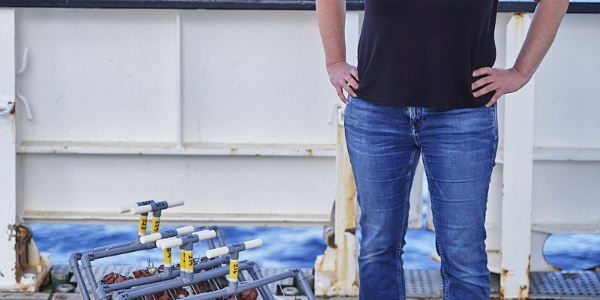
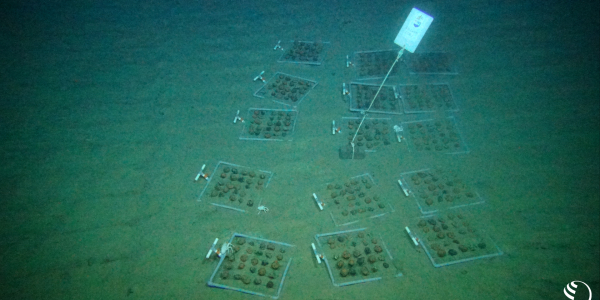
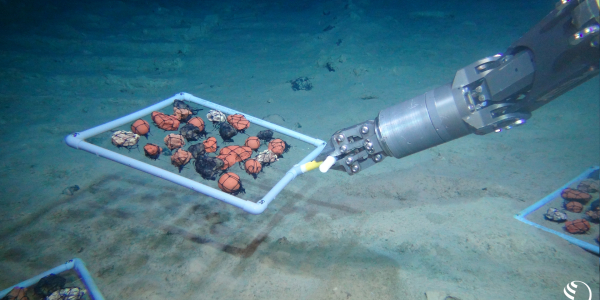
During this expedition, we recovered the first 500 of these artificial nodules. What sounds like a trivial task, requires teamwork, out of the box thinking, and lots of enthusiasm. The idea for this experiment was born almost 10 years ago during a scientific meeting, followed by funding of the project, collecting deep-sea clay and finding a ceramist who was eager to experiment with deep-sea clay ceramics and to produce thousands of artificial nodules. Next, frames were designed, that could hold 25 nodules each, and would allow for our experiments to be picked up from the seafloor with a diving robot or remotely operated vehicle (ROV). In addition, recovery boxes were built for an elevator that we use to bring the nodule frames (and other scientific instruments) from the seafloor to the working deck of our research vessel.
With so much effort already put into this experiment, the tension was high when the first experiments were recovered during this expedition. Again, this was a big team effort including the scientists, the ROV-team, and the ship’s crew. First, the deck crew lowered the elevator, which is connected to a strong cable, to 4.500 meters depth. Then, together with the ROV-team they deployed the diving robot, which is connected to the ship via a second cable for power supply and data transmission. In a container at the back of the ship with big screens, the ROV-pilots see the deep sea through the lenses of the video cameras mounted on the vehicle.
The pilots located the elevator and guided it with high precision to just a few meters away from the frames with the artificial nodules. Next, with intuition and a lot of experience the ROV pilots gently picked up the frames one by one using the robot’s arm and placed them in the recovery boxes. It is amazing that all this actually works – an operation that requires centimetre precision at 4.500 meters depth. Chapeau! During the first six weeks of our expedition, we successfully recovered 20 frames at 4 locations. 500 nodules were processed on board of the ship so they can be analysed for the potential colonization by deep-sea animals and their diversity in the lab once we are back on land.
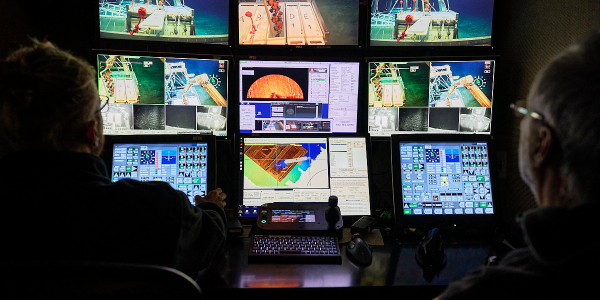
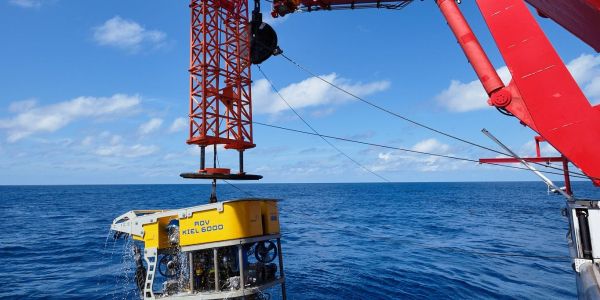
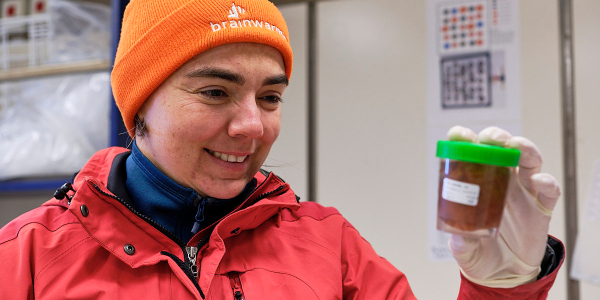
Here on board, we already get a first glimpse on the early results of the artificial-substrate experiment. As expected, the nodules on the frames where very sparsely colonized by visible life forms. Life in the deep sea proceeds at a very slow pace, but with this experiment we will find out how slow it actually is, as we know the starting point of colonization of our artificial nodules.
In the coming years to decades, we will unveil the age and growth rate of sessile animals such as anemones, sponges and corals. Currently, we have no idea how old, for example, the anemone on the picture above is. Has it been sitting on that nodule for 5, 50 or 500 years? Does it need a natural nodule to grow on or would an artificial one do the job and give it hold-fast in this muddy environment? Knowing how fast or slow recovery after nodule removal is and if natural nodules are needed to sustain the amazing forms of life in the deep sea will help us to better constrain the risks of deep-sea mining and the potential loss of biodiversity.
Related blogs
Read the expedition blog by Sabine Gollner from 2019
Read the blogs written by the crew at the RV Sonne MiningImpact expedition 295 (Nov-Dec 2022)
